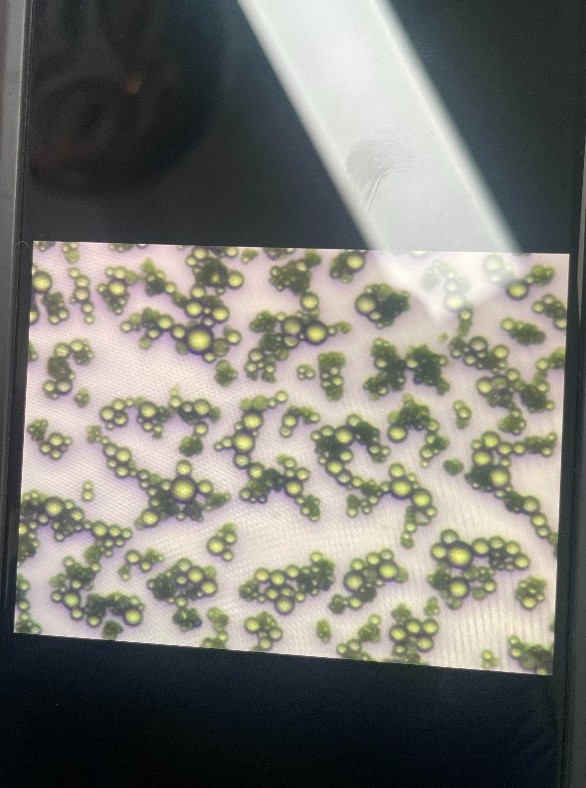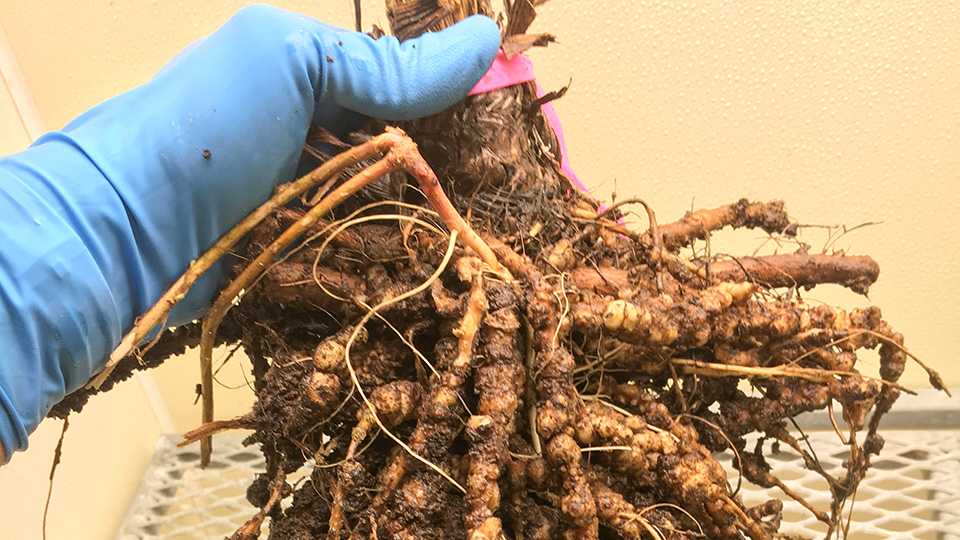
Root nematode
Root nematode disease is one of the dangerous diseases for many types of crops, from food crops, industrial crops, fruit trees to vegetables. Nematodes are small organisms but cause great damage to the root system of plants, weakening the plant, reducing productivity and in many cases leading to plant death. Nematode disease not only affects productivity but also reduces product quality, causing serious economic losses for growers.
1. Causes of root nematode disease

Root nematode disease is mainly caused by some parasitic nematodes, the most common of which are:
- Root-knot nematodes (Meloidogyne spp.): This type of nematode creates nodules or tumors on plant roots, affecting the process of water and nutrient absorption of the plant.
- Stem-boring nematodes (Pratylenchus spp.): This nematode penetrates the root tissue, causing holes and damaging the root structure.
- Root-knot nematodes (Rotylenchulus spp.): These cause wounds that twist the roots, limiting the ability of the roots to grow normally.
Nematodes are very small, only a few millimeters in size, and multiply rapidly in wet soil conditions, especially when humidity and temperature are high. They spread through soil, water, and infected farming tools.
2. Symptoms of root-knot nematodes
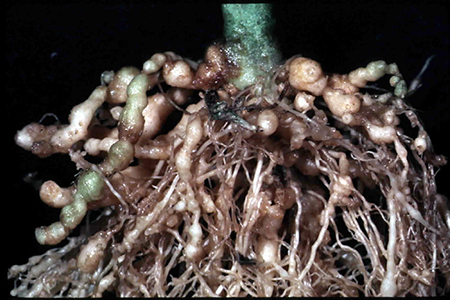
Symptoms of root-knot nematodes can vary depending on the plant species and the type of nematode causing the damage. Here are the most common signs that growers can recognize:
2.1. Symptoms on the roots
- Root nodules: When plants are damaged by root-knot nematodes, small nodules or tumors will appear on the roots, causing the root system to deform and not develop normally. These nodules hinder the plant's absorption of water and nutrients.
- Root damage and hollowing: Stem nematodes create hollows on the roots, causing the roots to become damaged, dry and brittle. These wounds can be conditions for other pathogenic fungi and bacteria to invade.
- Roots are twisted, dry and rotten: Roots attacked by nematodes can twist, not grow normally, dry and can rot.
2.2. Symptoms on leaves and stems
- Yellow and stunted leaves: Plants attacked by nematodes at the roots will have yellow leaves, lacking vitality due to insufficient nutrients and water to nourish the above-ground parts. The leaves become smaller, have fewer branches and the plant becomes stunted.
- Wilting: Due to damaged roots, the plant cannot absorb enough water and nutrients from the soil, leading to wilting, especially in the hot noon sun.
- Reduced productivity: Plants infected with nematodes grow poorly, cannot flower or bear fruit, leading to reduced productivity and quality of agricultural products.
2.3. Symptoms on fruit
- Small, deformed fruits: In fruit trees, nematodes cause the tree to not have enough nutrients to nourish the fruit, leading to small, deformed, and poor quality fruits.
3. Harmful effects of root nematodes
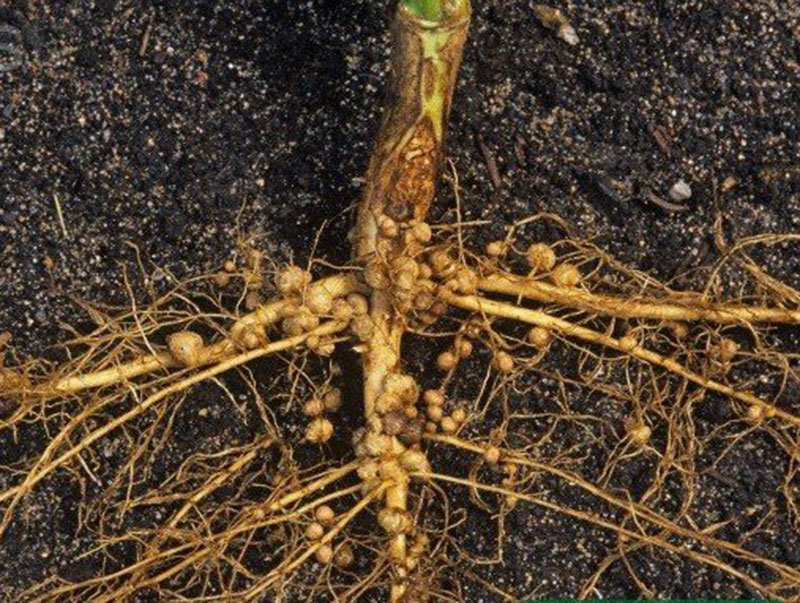
Root nematodes cause many serious damages to crops and agriculture, including:
- Reduced productivity and product quality: Nematodes prevent plants from developing normally, reducing their ability to grow and produce fruit. Fruits attacked by nematodes are often small and of poor quality, affecting their commercial value.
- Weakened and easily killed trees: Tree roots damaged by nematodes are no longer able to absorb nutrients and water, causing the tree to weaken and easily die, especially in harsh weather conditions.
- Spreading the disease to other areas: Nematodes can spread through soil, water, and farming tools, increasing the risk of infection in other growing areas.
4. Conditions for disease occurrence
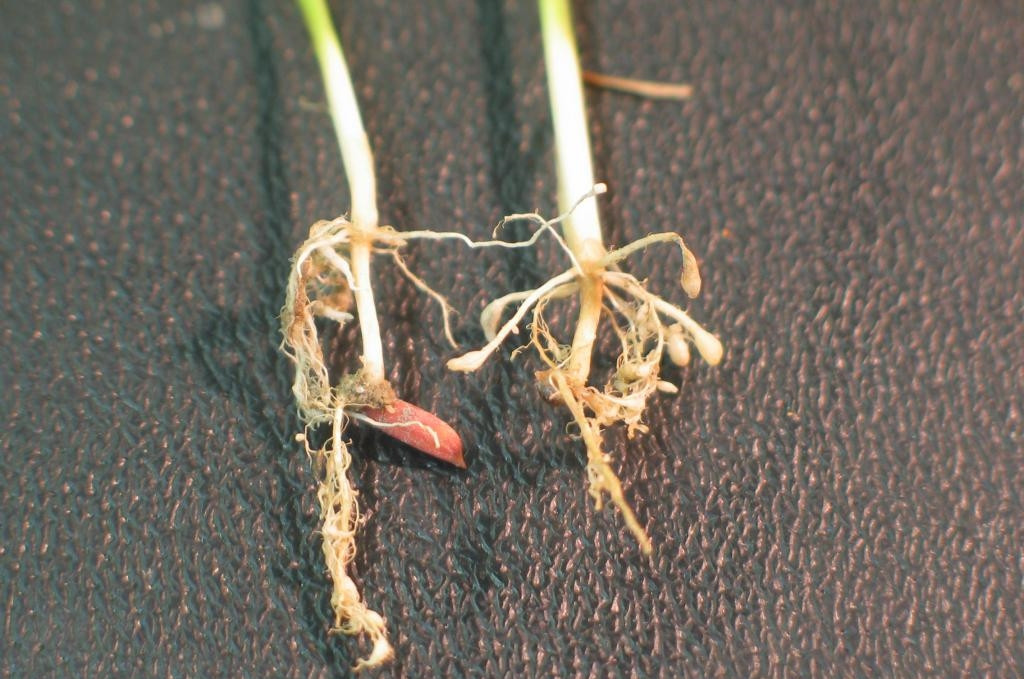
Root nematode disease often occurs and develops strongly in the following conditions:
- Wet soil and high temperature: Nematodes develop strongly in soil environments with high humidity and temperatures of about 25-30°C. Especially during the rainy season or in areas with poor drainage systems.
- Poor soil: Soil lacking in nutrients makes plants weak and susceptible to nematode attacks.
- Soil that has been cultivated many times: Growing the same crop on the same land area for many consecutive seasons creates conditions for nematodes to develop, because pathogens can survive in the soil.
5. Measures to prevent and control root nematode disease
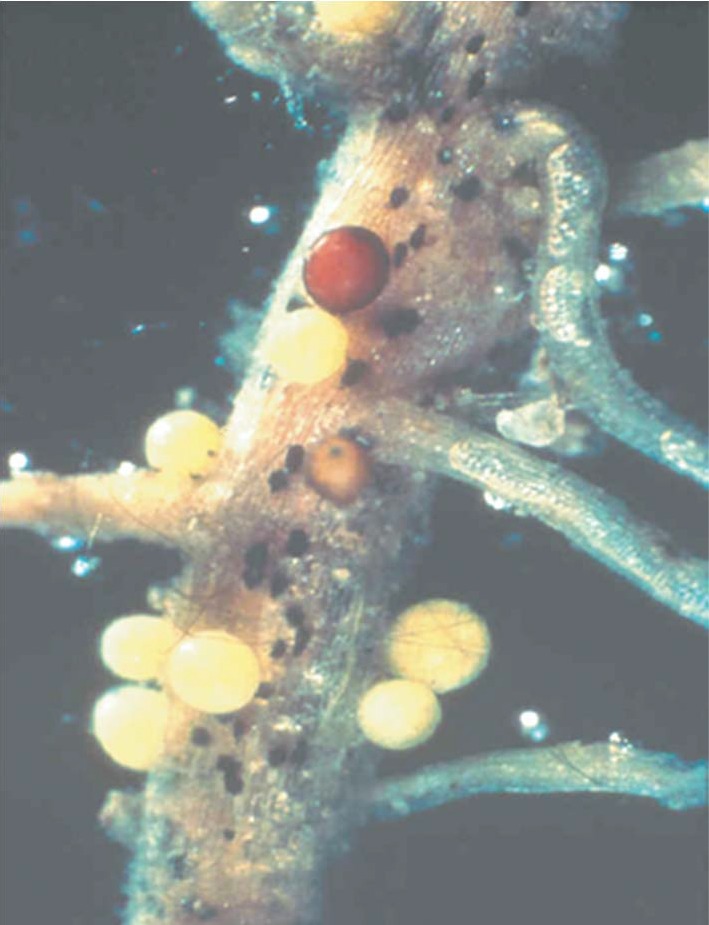
To prevent and control root nematode disease, growers need to apply integrated management measures, including improving growing conditions, using disease-resistant varieties and using pesticides appropriately.
5.1. Improve farming conditions
- Crop rotation: Avoid planting the same crop on the same area for many consecutive seasons, rotate with crops that are not hosts of nematodes to prevent disease.
- Organic fertilizer: Applying composted organic fertilizer or biofertilizer helps improve soil quality and enhance beneficial microorganisms, helping plants grow healthily and limit the development of nematodes.
- Improve drainage system: Ensure the soil has good drainage capacity, avoid waterlogging, help reduce the risk of nematode disease.
5.2. Land and water management
- Soil treatment before planting: Soil can be treated by heat (exposing the soil to sunlight), using lime powder or biological products to kill nematodes in the soil.
- Watering properly: Watering properly to ensure that the soil is not too wet or too dry, creating favorable conditions for plant growth without promoting the development of nematodes.
5.3. Using disease-resistant varieties
- Choosing disease-resistant varieties: Using nematode-resistant varieties or varieties with good disease tolerance is an effective measure to reduce the risk of infection from the beginning.
- Using disease-free seedlings: Ensure that seedlings are not infected with nematodes when planting, especially for perennial crops such as coffee, pepper, or fruit trees.
5.4. Use biological measures
- Choosing disease-resistant varieties: Using nematode-resistant varieties or varieties with good disease tolerance is an effective measure to reduce the risk of infection from the beginning.
- Using disease-free seedlings: Ensure that seedlings are not infected with nematodes when planting, especially for perennial crops such as coffee, pepper, or fruit trees.
5.5. Use pesticides
- Nematicides: Use nematicides according to the manufacturer's instructions. Active ingredients such as Ethoprophos, Carbofuran or Oxamyl are often recommended for nematode control. However, it is necessary to strictly follow the dosage and duration of use to ensure safety for crops and the environment.
- Products containing active ingredients for disease prevention and treatment such as: Abinsec 1.8EC, Oxatir1, HAIHAMEC 3.6E Ankamec 3.6EC Dapharnec 3.6EC, BINHTOX 3.8EC, BINHTOX 3.8EC gold, PILOT 15AB
6. Conclusion
Root nematode disease is one of the serious problems for growers, greatly affecting crop yield and quality. However, by adopting integrated management practices such as crop rotation, organic fertilization, improved drainage, use of disease-resistant varieties and biological control, growers can minimize the damage caused by the disease.
Monitoring and early detection of nematode diseases, along with appropriate preventive measures, will help farmers protect their crops, improve productivity and ensure product quality.
Bình luận
Những bình luận mới nhất
